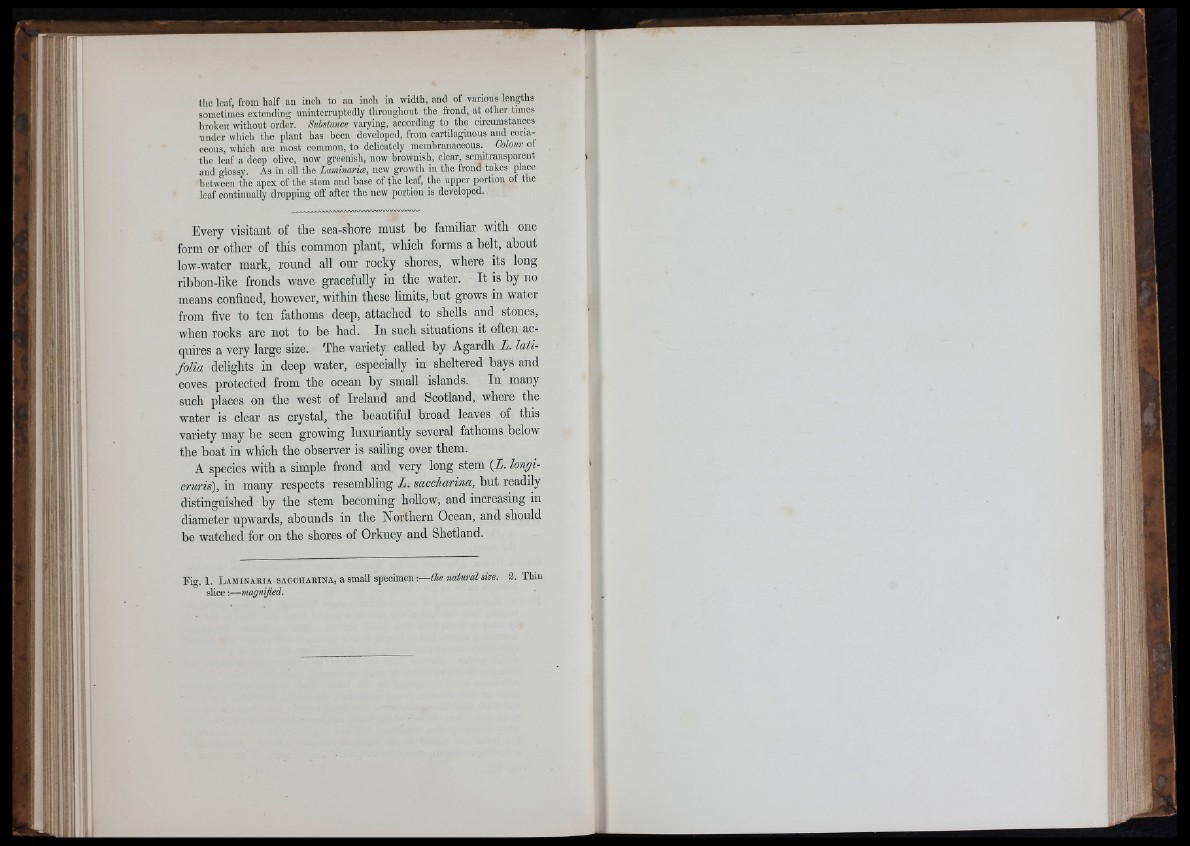
the leaf, from half an inch to an inch in width, and of various lengths
sometimes extending uninterruptedly throughout the frond, at other times
broken without order. Substance varying, according to the circumstances
under which the plant has been developed, from cartilaginous and coriaceous,
which are most common, to delicately membranaceous. Colour of
the leaf a deep olive, now greenish, now brownish, clear, semitransparent
and glossy. As in all the laminarice, new growth in the froud takes place
between the apex of the stem and base of the leaf, the upper portion ot tlie
leaf continually dropping off after the new portion is developed.
Every visitant of the sea-shore must be familiar with one
form or other of this common plant, which forms a belt, about
low-water mark, round all our rocky shores, where its long
ribbon-like fronds wave gracefully in the water. It is by no
means confined, however, within these limits, but grows in water
from five to ten fathoms deep, attached to shells and stones,
when rocks are not to be had. In such situations it often acquires
a very large size. The variety called by Agardh Z. latifolia
delights in deep water, especially in sheltered bays and
coves protected from the ocean by small islands. In many
such places on the west of Ireland and Scotland, where the
water is clear as crystal, the beautiful broad leaves of this
variety may he seen growing luxuriantly several fathoms below
the boat in which the observer is sailing over them.
A species with a simple frond and very long stem (Z. longicruris),
in many respects resembling Z. saccharina, but readily
distinguished by the stem becoming hollow, and increasing in
diameter upwards, abounds in the Northern Ocean, and should
be watched for on the shores of Orkney and Shetland.
Fig. 1. L aminaria saccharina, a small specimen
slice ■.— magnijied.
size. 2. Thin
111 •
i M-1
, iiL